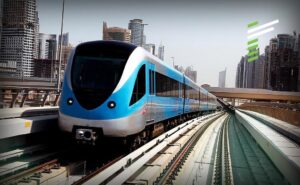Background
Cargo ports, also known as seaports or maritime ports, are essential facilities located along coastlines and waterways that facilitate the import and export of goods by sea.
These ports possess infrastructure like docks, piers, and warehouses, and are strategically positioned near major shipping routes, connected to road and rail networks, and equipped with customs and security measures. Major cargo ports such as Shanghai, Singapore, Rotterdam, Los Angeles, and Hamburg play a significant role in global trade, contributing to economic development and serving as vital gateways for international commerce.
Our client is a port operations group that invested, developed, and managed port operations in several countries in Asia, the Middle East, Africa, Europe, America, and Australia. They were facing increasing pressure from various stakeholders. Shareholders, for one, were pressing for results, cost reduction, better communication, and transparency. Competition was also expected to increase due to overcapacity in the region.
Project Approach
Based on our initial analysis, we identified the following areas of concern:
- Ineffective organisational structure
The client’s organisational structure and support processes were not designed for rapid response to variations. Unclear strategic alignment across the organisation, and the lack of clarity in reporting lines, hampered growth as management had difficulties driving strategic plans to lower levels. There was also very low span of control within the organisation, below the average for the industry, which indicated that the client had a top-heavy managerial structure. - Lack of management control systems (MCS) and standard processes
The client’s systems had grown organically over the years, but were poorly aligned with their strategic targets. Very few KPIs measured productivity and performance despite the wealth of data available. They also lacked visibility on compliance and execution performance levels and had difficulty in identifying variances and root causes of problems. - Organisational behaviour that didn’t support growth
Employees were often firefighting problems of the moment. Due to unclear roles and responsibilities and a lack of accountability, there were misoriented efforts, and low levels of sustainability of implemented actions and initiatives.
Project Implementation
To create an effective organisation structure, we had to address more than the structure alone. Together with a task force of client-side experts, we redesigned their organisation structure, systems, and processes to work together in stimulating “wanted behaviour” and ever-increasing performance. This is what we implemented:
- Designed a new organisation structure
We redesigned the structure to improve alignment to work processes and created new tools to control/scale future labour requirements. - Optimised processes
Around 180 processes were reviewed and documented with SOPs. We also designed and implemented process MCSs in all areas together with the task force, as well as improved formal communication, management performance reviews, and action plans for increased functional performance. - Adjusted organisational behaviour
Around 185 job descriptions were rewritten in accordance with new structure functions, roles, and responsibilities. After the new organisational design was implemented, all affected personnel were trained in the new ways of working.
We also trained internal consultants within the organisation to identify and work on future areas of opportunity, geared towards prevention rather than cure.
Key Results
US$10.3 million
Reduction in annual labour costs
100%
Achievement of proposed financial results and cost reduction
4.8:1
Return on investment
Due to a number of municipality issues, the client achieved total savings of approximately US$600,000, making the transformation project cost neutral. There were, however, a host of qualitative benefits that will ensure sustainability including:
But that was just the beginning. In addition to the labour cost reduction, the transformation programme delivered:
- A structure for the operations, administration, and support functions
- Key processes and interfaces aligned with operating procedures
- Improved communication levels within the organisation
- Trained managers
- An internal group of qualified professionals to leverage the knowledge acquired
The client is now a more efficient, future-ready organisation that thrives within standardised processes and management control systems.










